
设计单位 IDO元象建筑、重庆合信建筑设计院
项目地点 大理市海东镇文笔村
建成时间 2017年4月
建筑面积 改造前1110平方米,改造后1785平方米
室内设计 CAS千迈设计
一、项目背景
IDO元象建筑与重庆合信建筑设计院于2015年完成了第一个设计型酒店——大理“慢屋·揽清”。同年,建筑师开始了位于洱海东岸第二个慢屋——“慢屋·极目”的设计。
In 2015, IDO completed the first design hotel (called Munwood Lakeside) in Dali, China, in collaboration with Chongqing Hexin Architectural Design Institute. We played a dual role in that project since we were our own client. We participated in all stages of that project, from planning and site selection to design, construction and operation. In the same year, we started the design of Munwood Panoroma, which is the second hotel of Munwood series, located on the east bank of Erhai Lake. The feedbacks received from guests on Munwood Lakeside gave us references and impetus to approaching the design of this project.
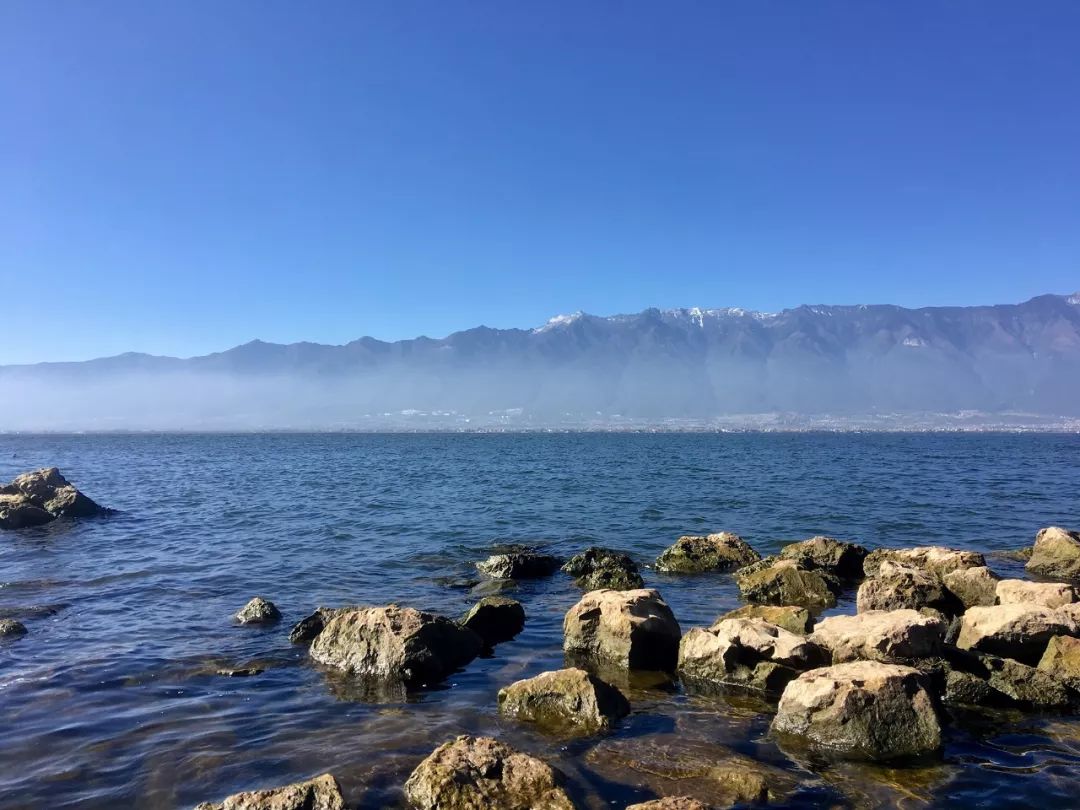
由于“慢屋·揽清”源自“清晨,卧于床榻可观洱海日出”,为了使客人获得不同的体验,“慢屋·极目”的选址关键词选定为“日落”,选址于海东镇的文笔村。此地呈现出典型坡地聚落的特征,依山傍水,对岸正对着苍山、古城与三塔,这里是整个洱海环线上可饱览“苍洱全景”的最佳位置。项目取名“极目”,以场地视线极佳,适合“极目远望”而得,英文名 “Panorama” 更是暗合了“苍洱全景”的画面感。
Considering that Munwood Lakeside enables guests to enjoy sunrise on the bed, we hoped to create a different experience for them in Mundwood Panorama, and so took "sunset" as the key word for choosing the site. Finally we decided to locate the project in Wenbi Village of Haidong Town, which directly faces the Cang Mountain, Dali Ancient City and Three Pagodas of the Chongsheng Temple and is a perfect position to have a panoramic view of Erhai Lake. We named the hotel "Panorama", indicating that it provides an open view to the surrounding landscape.Wenbi Village features a cluster of architectures on a sloping land.



慢屋最终选定在山脚下及半坡上两户不同标高的院子,占地约两亩半,场地竖向高差近四层。基于项目低造价的改造原则,“轻介入”的改造方式便自然成为了建筑师的选择,适度改造的方式使建筑更和谐地融入于原村落环境之中。
We selected two local dwellings with yards for building the hotel. Covering a land area of 1,666 sqm in total, the original two architectures are respectively situated on the foot and middle of the slope, with a big elevation difference that is nearly the height of four storeys. Based on the principle of low-cost, we chose to work on the transformation via "subtle interventions", so as to better let the architectures blend with the built environment of the village.
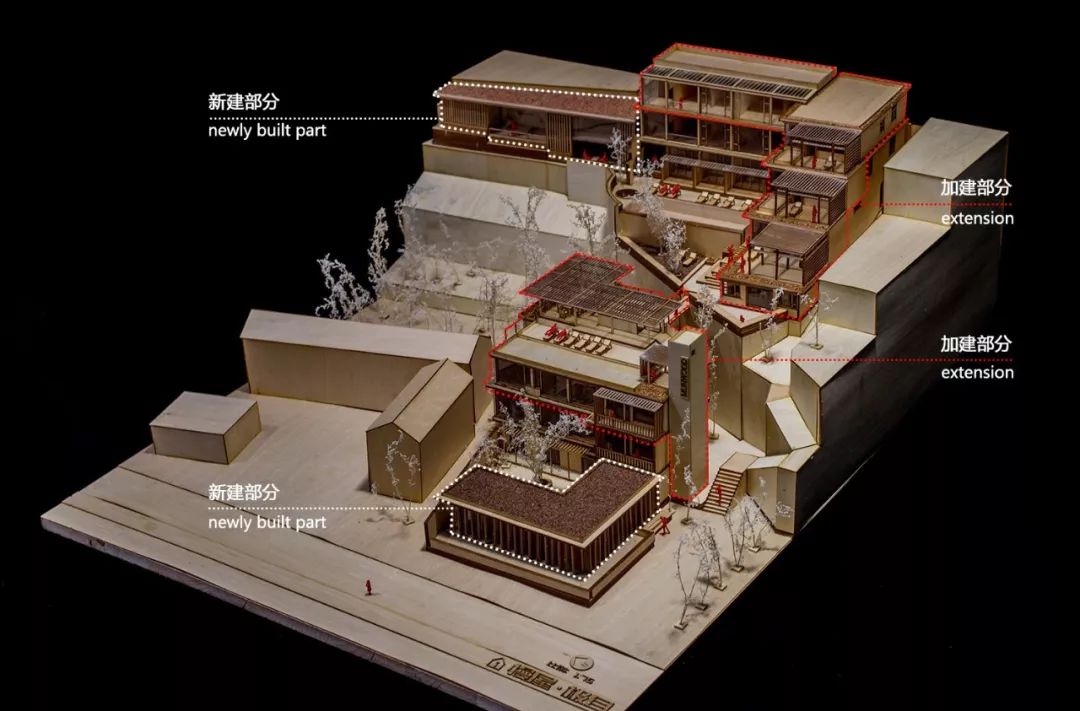
二、适度改造与秩序重塑
设计首先对上下院功能空间进行了重新组织。下院的改造在原有二层砖混结构农宅屋顶上加建第三层作为客房,同时新建了一处呈L型的单层钢结构建筑与原有农宅围合成院落空间,同时置入了餐厅和接待功能。
We firstly rearranged the functional spaces of the two original buildings — the upper block and lower block. The lower block is formerly a two-floor farmer's house, constructed with bricks and concrete. We added a third floor to its roof to accommodate guest rooms. Besides, we also built a L-shaped steel-structured volume on the ground, which encloses a courtyard-like space with the building already existed and functions as the reception & dining area.
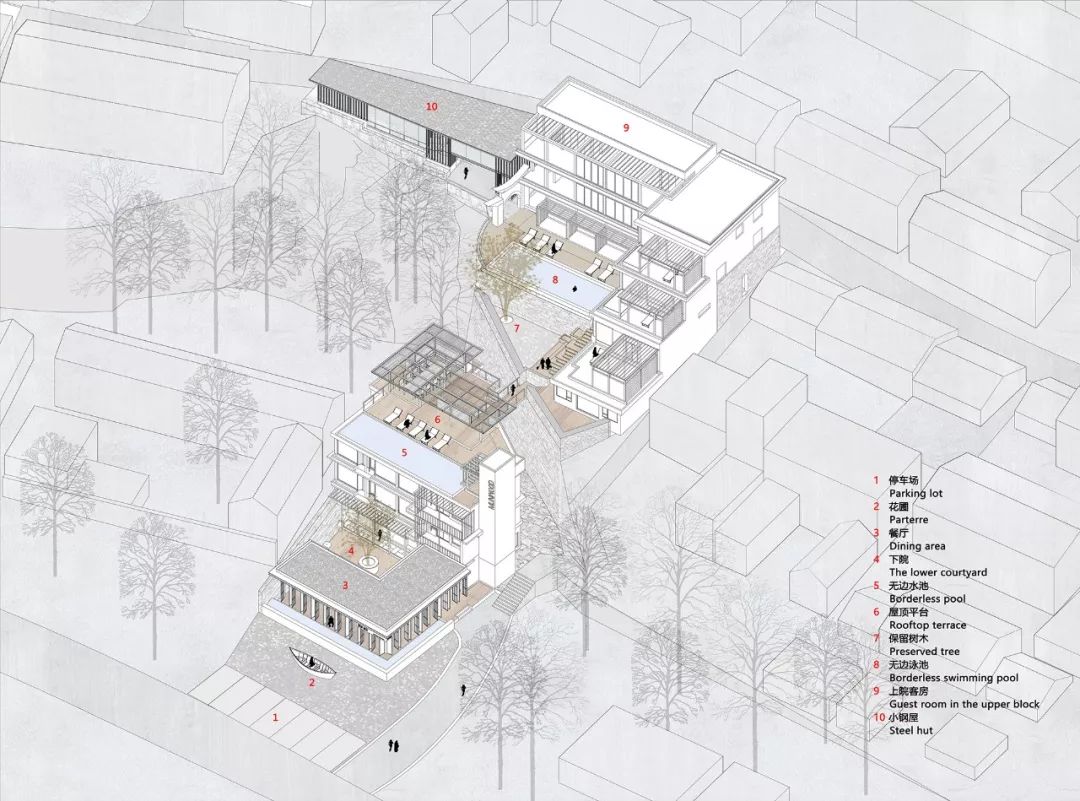
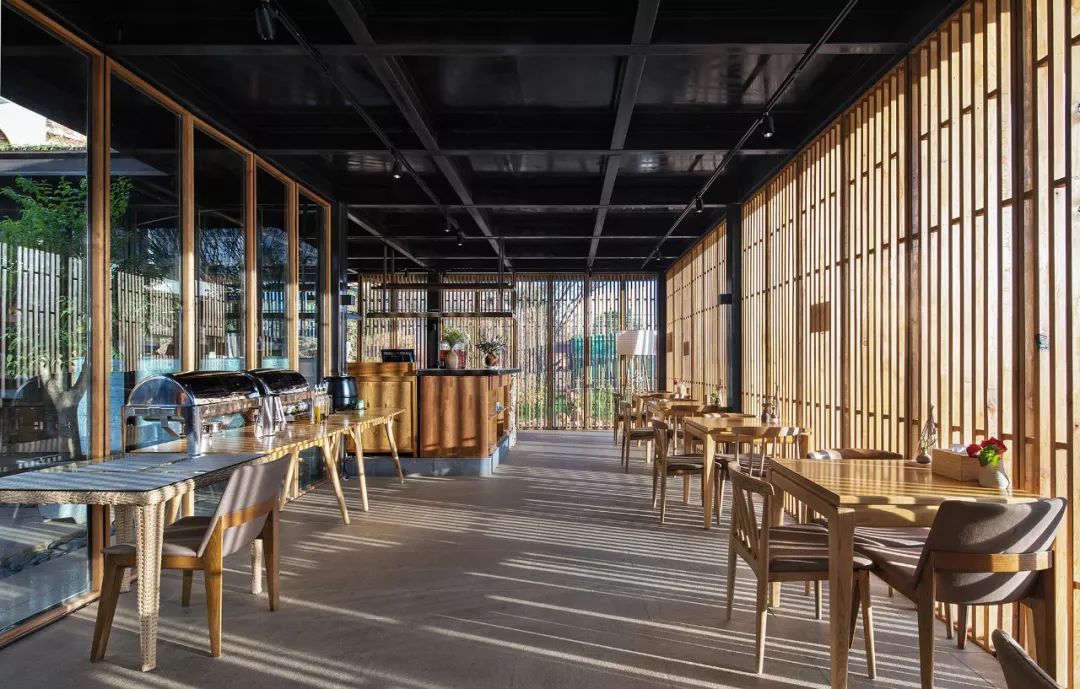
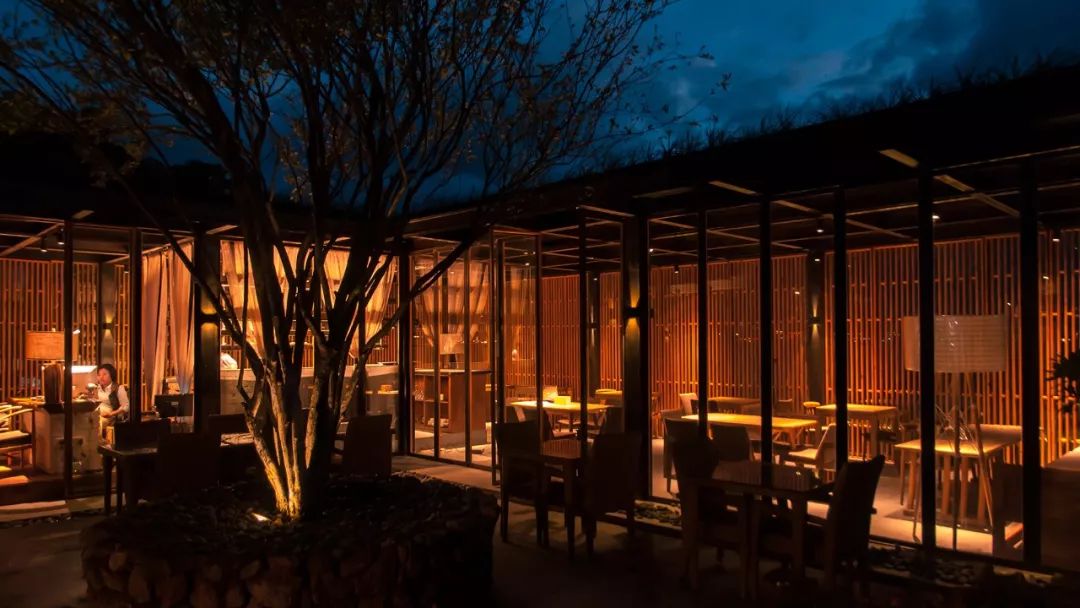
上院的改造,原有农宅为二层半的砖混结构,设计以原有结构形式完成第三层,同时在其一侧加建三个带大露台的退台式客房空间,使其形态由一字型成为L型,使得上院空间形成以无边泳池为景观核心的半围合空间形态。
The upper block is formerly a two-and-a-half-storey rectangular local dwelling, also built with bricks and concrete. We completed the third floor space by following the original architectural structure, and at the same time added three guest rooms with big terraces on one side. In this way, the architecture was given a new "L"-like shape, and a semi-enclosed yard was formed, with a borderless pool as the highlight.

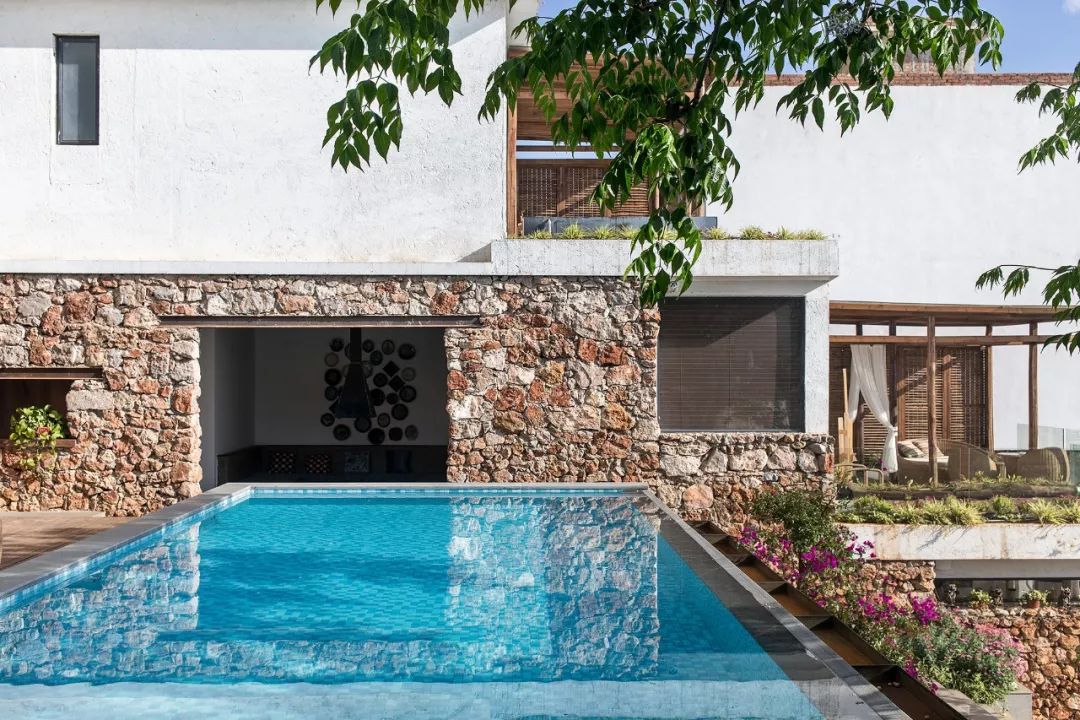
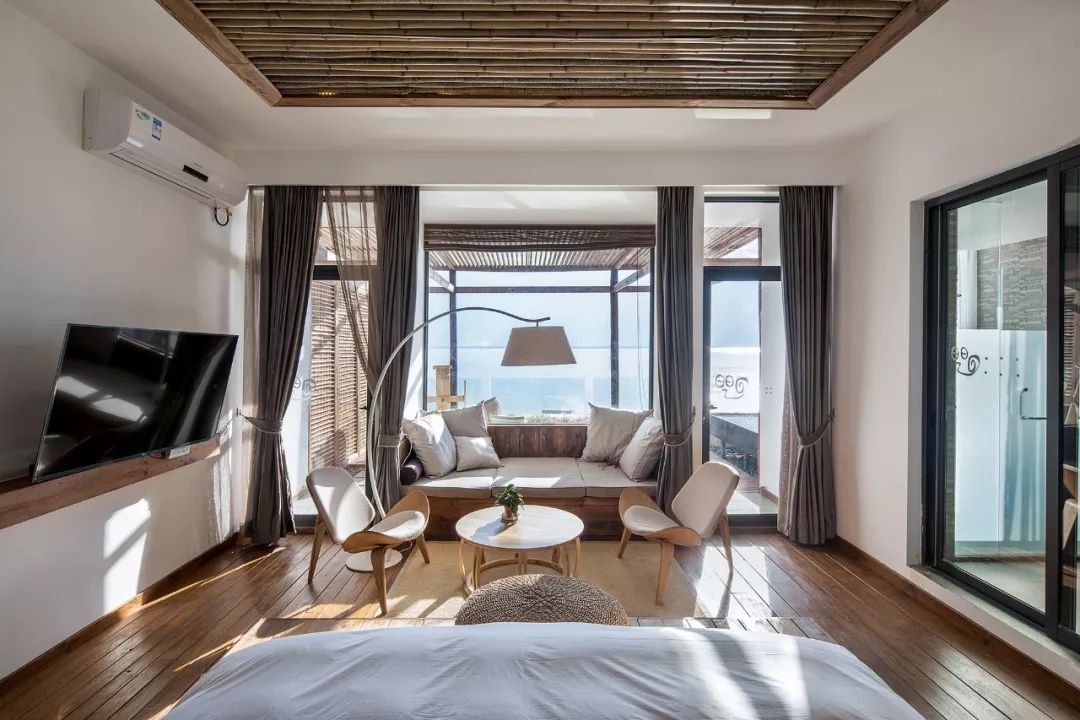
在上院主体客房的北侧为新建的独立客房区,同样采用的钢结构体系,简称“小钢屋”。建筑的所有新建部分之所以选择钢结构,是希望更明确地表达新旧之间的空间关系以及建构层面上的区别,使其更有类型学上的差异和可识别性。
On the north side, we newly built an independent guest room area. It is made of a steel structure, so we call it "steel hut". The reason that we chose to adopt a steel structure is that we hoped to express the spatial relationship between the old and new, present the differences at construction and typology level, and make it more identifiable.

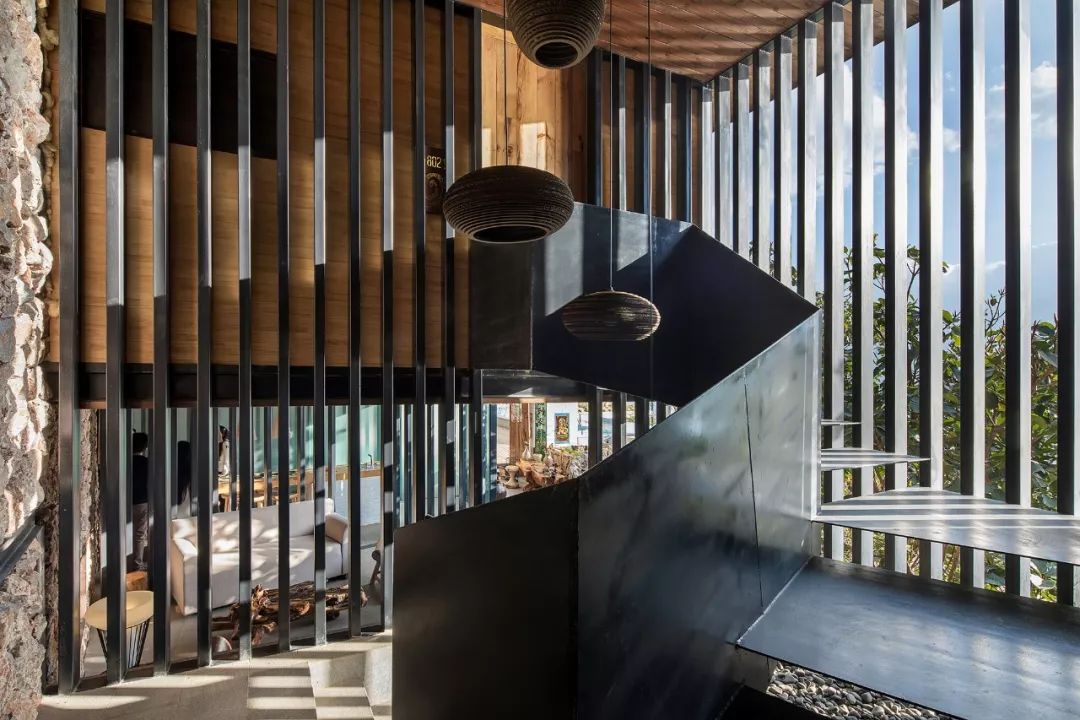
三、与山水对话的公共空间体验
极目的公共空间连续且位于不同标高之上,建筑师为客人提供了一条“移步易景”的游走路径,同时也建立了人与风景之间多维度的时空关系。
The public spaces are continuous and situated at different elevations, thereby forming a circulation route for guests along which they can enjoy varying views at every step, and also generating multi-dimensional interactions between people and landscape.

建筑师在下院屋顶设置了公共休息平台,配置了无边水池,休闲座椅区等,客人从接待大厅乘坐电梯到这里之后,会先在这个平台上俯瞰洱海,远眺苍山,建构了与山水的第一次对话。
We created a public terrace on the roof of the lower block, which is equipped with a borderless pool and a relaxing seating area. Taking the elevator upwards from the reception lobby, the guests will reach this rooftop terrace, on which they can overlook the Erhai Lake and Cang Mountain and establish a dialogue with the natural scenery.
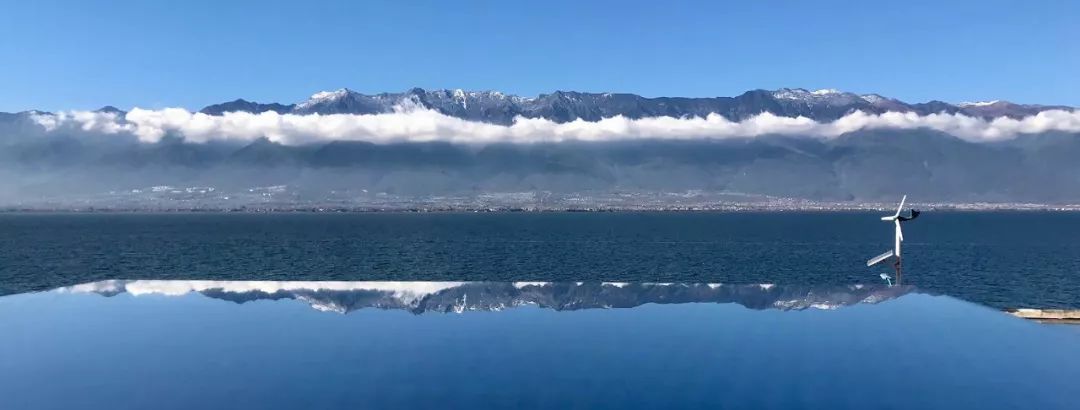
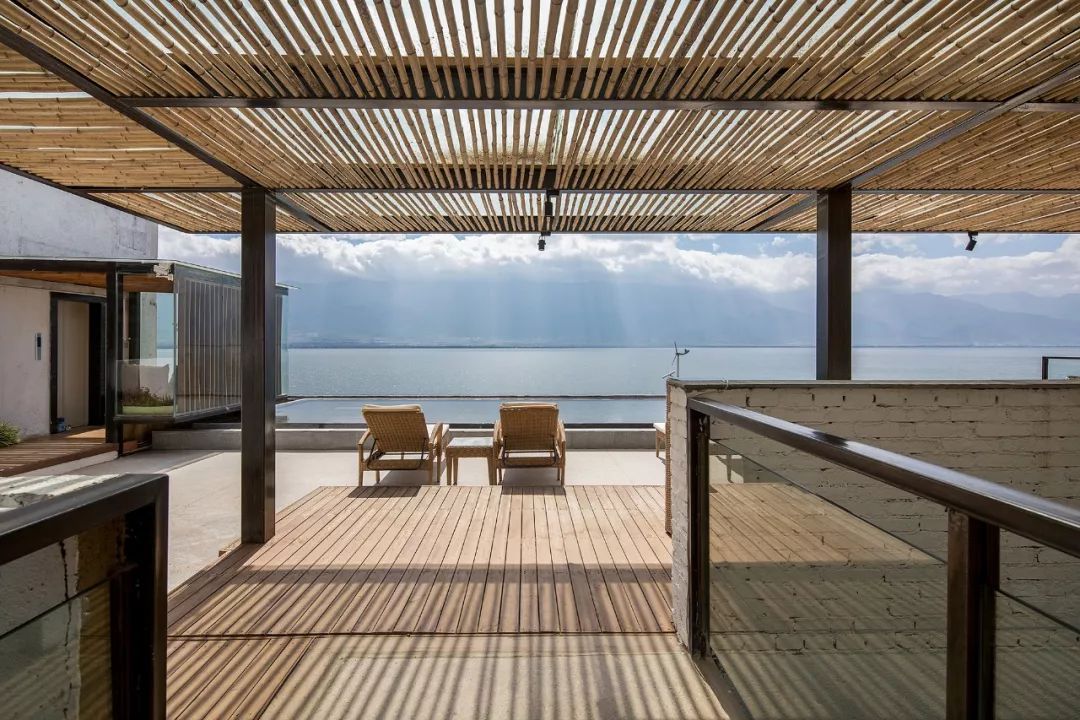

下院屋顶平台经过一座钢结构的桥,跨越悬崖进入上院,拾级而上,行至上院无边泳池回望:湖光山色,尽收眼底。加之不同季节、一天中不同时间段阳光、风等气候要素的介入,客人将获得多重的体验,对“苍洱全景”也将有不同的认知。
And then, they can arrive at the upper block area after passing through a steel bridge that stretches across a small cliff and ascending the stairs. The yard of the upper block also has a pool and allows the guests to enjoy the panorama of the charming lake and mountains. The sunlight and winds vary in different seasons and at different time throughout the day, which enriches the guests' experience.


四、客房空间:多样性与体验感
慢屋·极目布置了23间客房,共11种房型。在客房内部,建筑师对景观的考量延伸到每一种房型设计中。在601系列房型的空间操作中,设计一反常规将卫生间与卧室的面积比设为1:1,并结合入户花园设置了浴缸。将室内空间室外化,营造了独特的空间体验。而在另一侧的卧室区,从位于榻榻米上的睡眠空间往洱海方向看,远方的风景形成了“框景”。
Panorama Resort has in total 23 guest rooms of 11 different room types. The idea of connecting to nature was incorporated into the interior design of every room type. Taking the guest room 601 as an example, the design took an unconventional path by dividing space area equally between the bedroom and bathroom. The bathroom area is combined with an indoor garden, creating an illusion of being outside and providing a unique bathing experience. On the other hand, the bedroom area faces the Erhai Lake, and the window near the tatami frames the outdoor landscape.
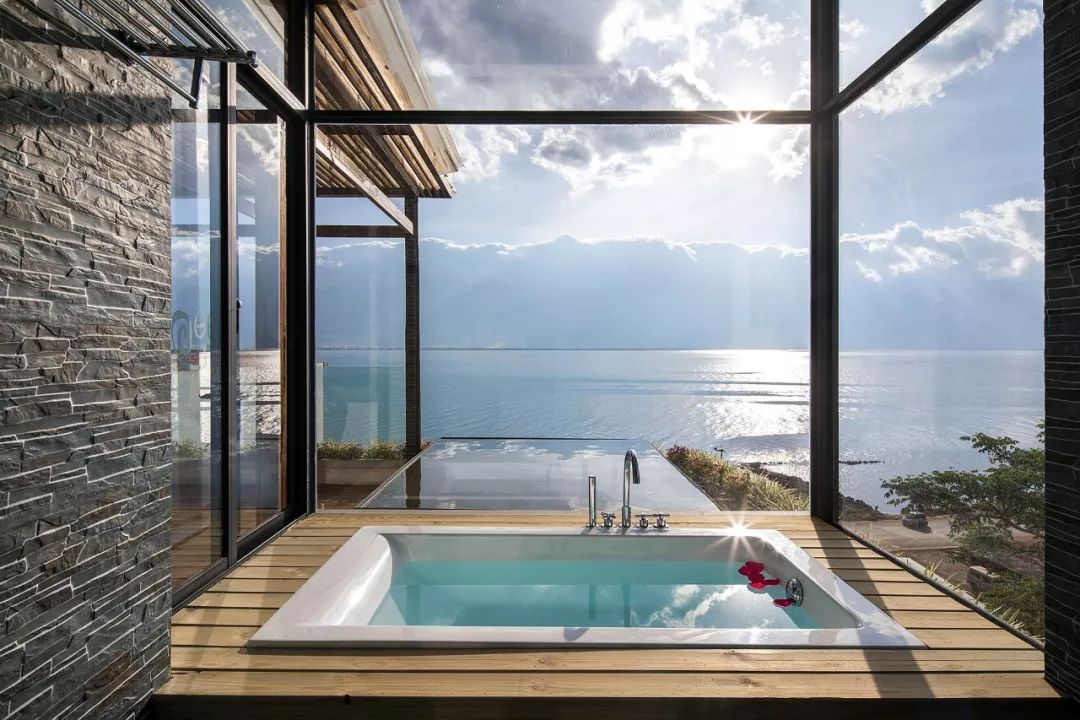


在606系列房型设计中,卫生间布置于卧室区的一侧,浴缸区域靠近外窗一侧布置,窗外设置无边际镜面水池,人在浴缸中的视线、水池恰好与洱海相连在一起,增强了与洱海的亲近感。
Another example is the guest room 606. Its bathroom is placed beside the bedroom area, with the bathtub situated next to the exterior window facing a reflective pool. Seen from the bathtub, the pool seems to connect with the Erhai Lake, forming a "closer" interaction between the lake and the guests.

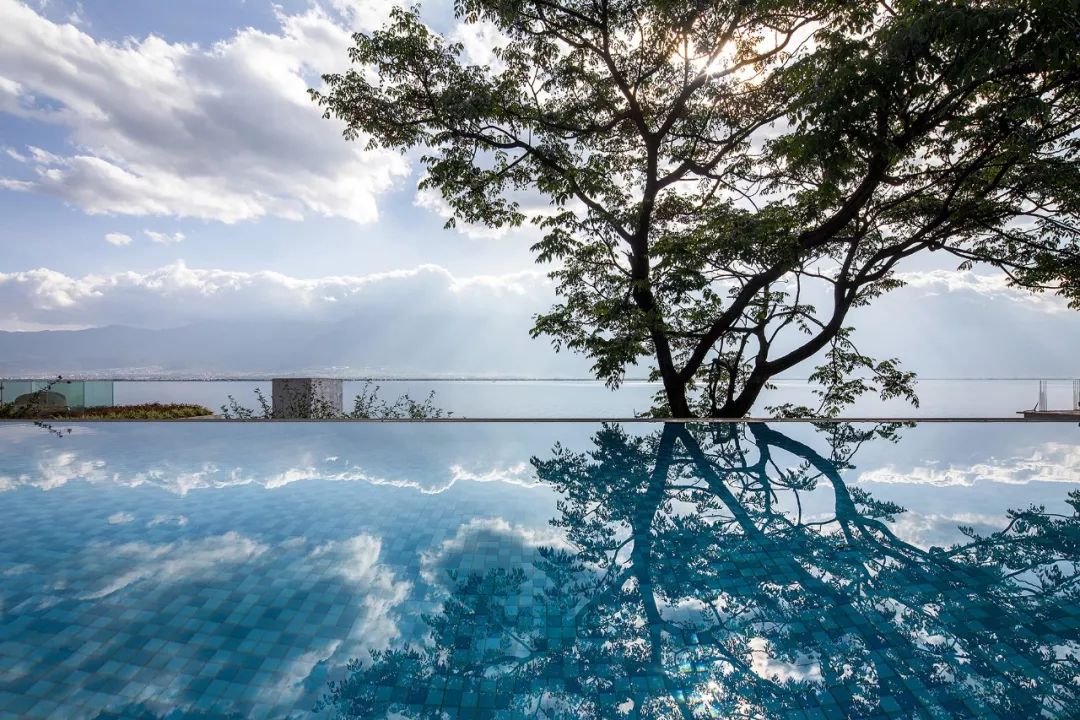
而五楼靠近无边泳池的客房,建筑师为了保证房间的私密性,在客房外设置了过渡空间,木格栅形成了“框”的形式,这一处有纵深感的画框同样将泳池、洱海与苍山构成为一幅“山水画”。
For the guest room on the 5th floor next to the borderless pool, a transitional space was specially set up in consideration of privacy. The wooden gratings in this area forms a "frame" with a sense of depth, which combines the pool, the Erhai Lake and the Cang Mountain in the background into a "landscape painting".
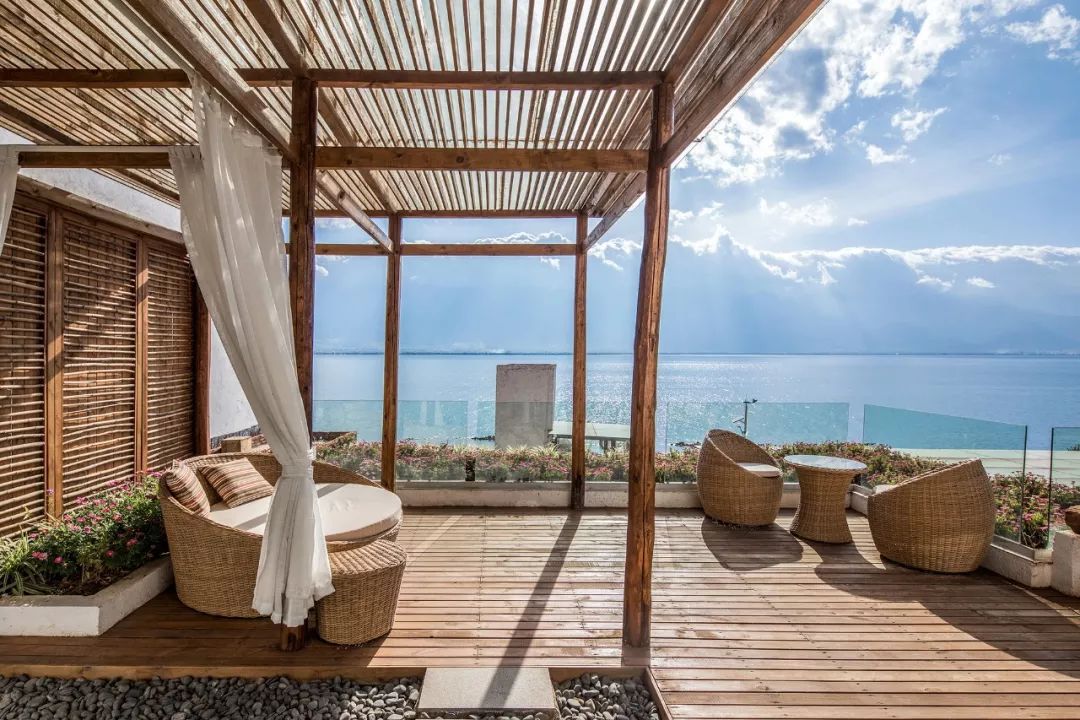
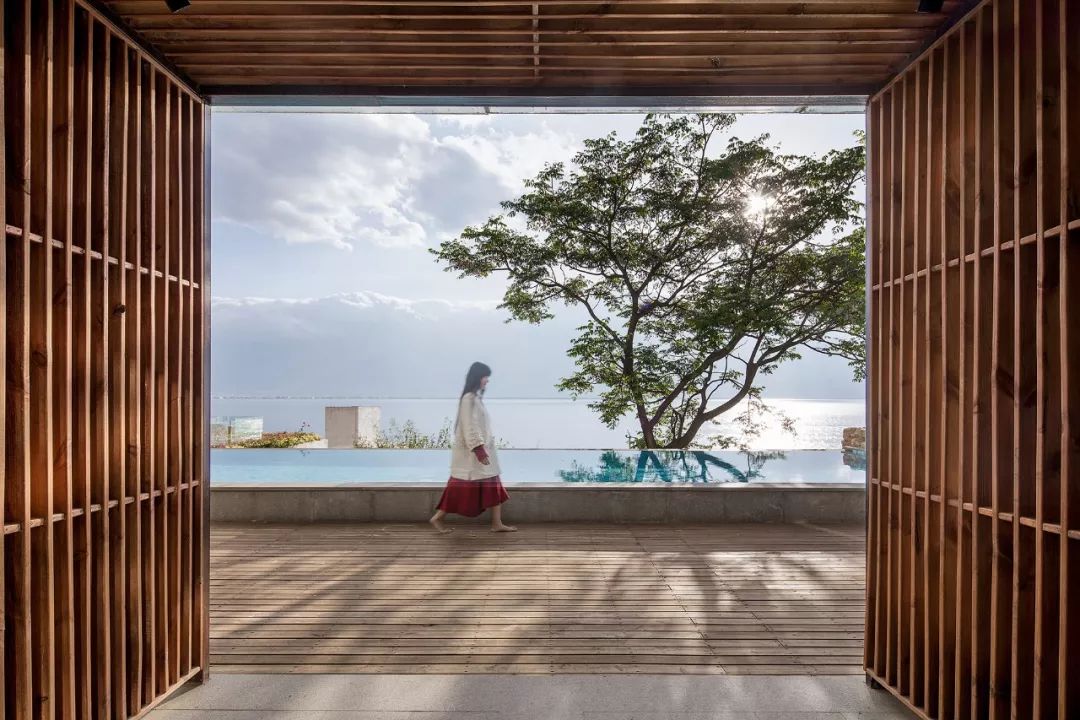
五、关于体验的建造:小钢屋设计解读
“小钢屋”位于上院场地的最北侧,其用地狭长,呈梯形。南侧最宽处约6米,北侧最窄不足3米,长约21米。场地北高南低形成缓坡,高差约2.5米,场地西面临悬崖,视线无遮挡,可直接观苍洱全景。
The steel hut is located on the northernmost side of the upper block. The site is narrow, long, and trapezoidal, which is about 21 meters in length. From south to north, the width gradually decreases from 6 meters to less than 3 meters. Besides, the site slopes downward from north to south, with an elevation difference of 2.5 meters approximately. Facing the cliff on the west, it provides the guests an open view to the Erhai Lake and Cang Mountain at a distance.


场地东面为堡坎,2米左右的堡坎上则为村子里的公共通道。用地原是上院农户进出村子的主要通道。上下院合并使用后,该用地将不再作为通道使用。慢屋希望在这块狭小用地上建造一个包含两间客房,并带有公共空间的独立客房区。那么,如何在较小面积用地上实现高效、舒适、体验感特别的度假空间?这催生了这次建筑实验。
In addition, on the east side of the site, there is a retaining wall about 2 meters high, above which is a public path of the village. The site of the steel hut was once the main passage for the dwellers of the upper block to enter and exit the village, but it no longer serves that function since the merging of the upper and lower blocks. We hoped to make use of it to build an independent guest room area with a communal space and two guest rooms, and so we carried out a construction experiment and exploration on creating an efficient, comfortable and experience-focused vacation space on a limited site area.
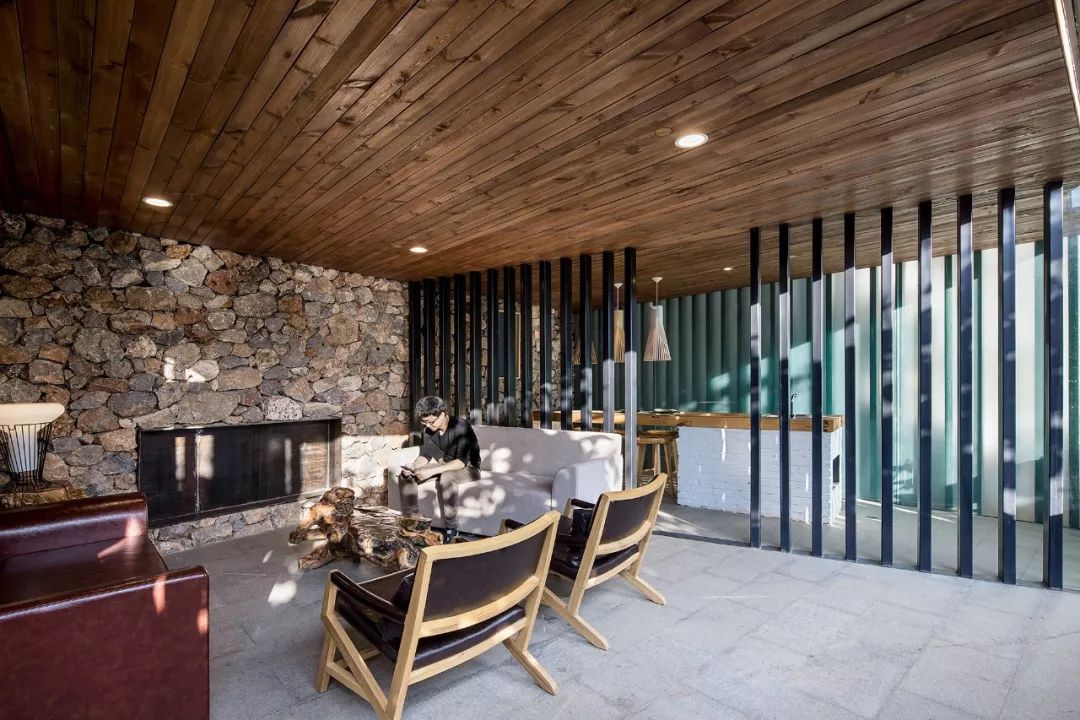

针对用地面积较小且不规则的现实条件,建筑师决定将两个客房空间的墙面处理成斜线,呈“八字型”,以使客房面对洱海获得更为宽阔的景观面,而被这两个客房“切割”剩下的三个倒梯形空间则成为了卫生间、厨房及公共楼梯。这个划分方式再结合对缓坡的分台及错层处理,产生了路易·康所说的“服务与被服务空间体系”:作为“服伺空间”的交通体、厨房、卫生间等,和作为“被服伺空间”的客房、公共客厅等。
In view of the limited area and irregular shape of the site, we decided to arrange the flank walls of both guest rooms on diagonal lines, which splay outwards. In this way, the guest rooms have a wider view towards the Erhai Lake, and several 'inverted trapezoidal" spaces were "cut" and left on the site, which were converted into a washroom, kitchen and public staircase hall. Such way of spatial division, combined with the split-level design based on the gentle slope, embody Louis I. Kahn's concept of "Served Spaces and Servant Spaces": with staircase hall, kitchen and washroom as "servant spaces", and guest rooms and the public living room as "served spaces".
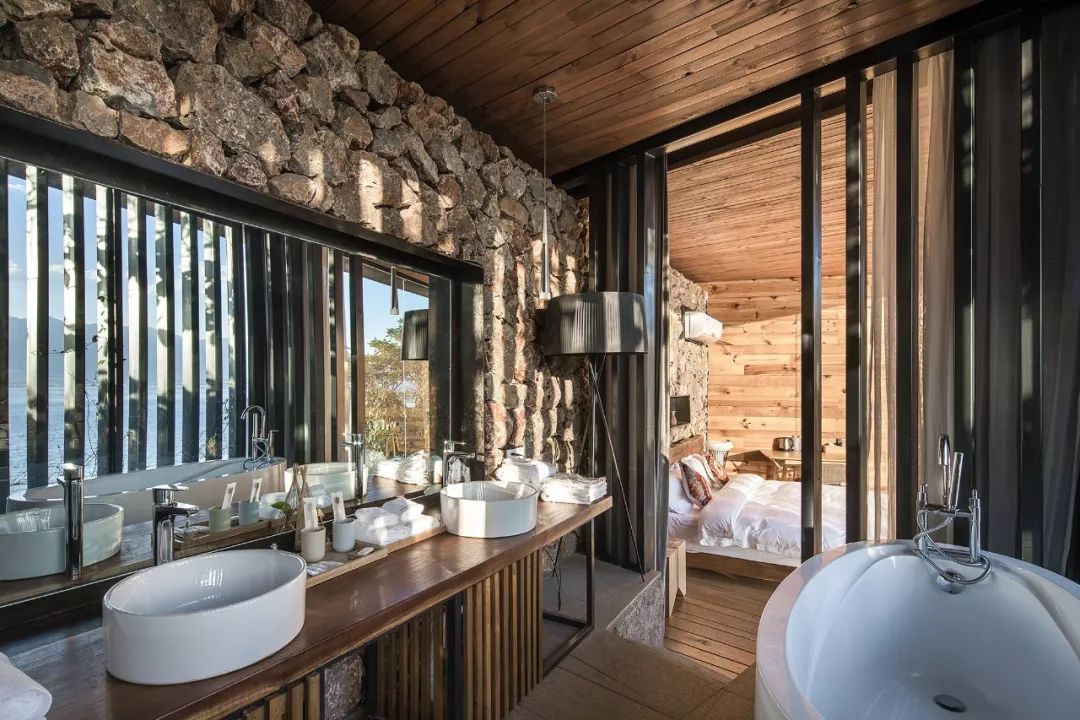

在空间秩序确定之后,建筑师希望结构秩序可以与空间秩序成为一体。因此,三个“服务空间”成为了结构支撑筒。考虑到结构体系经济性以及施工便捷度,结构设计采用了由小尺寸矩形钢管排列而成的“钢格栅筒体”作为主体支撑。
After figuring out the spatial order, we wanted to make the structural order integrate with it, and let the three "servant spaces" together constitute the structural supporting system. Considering the economy of the structural system and convenience for construction, we adopted small rectangular steel tubes to form grid as the main supporting structure.
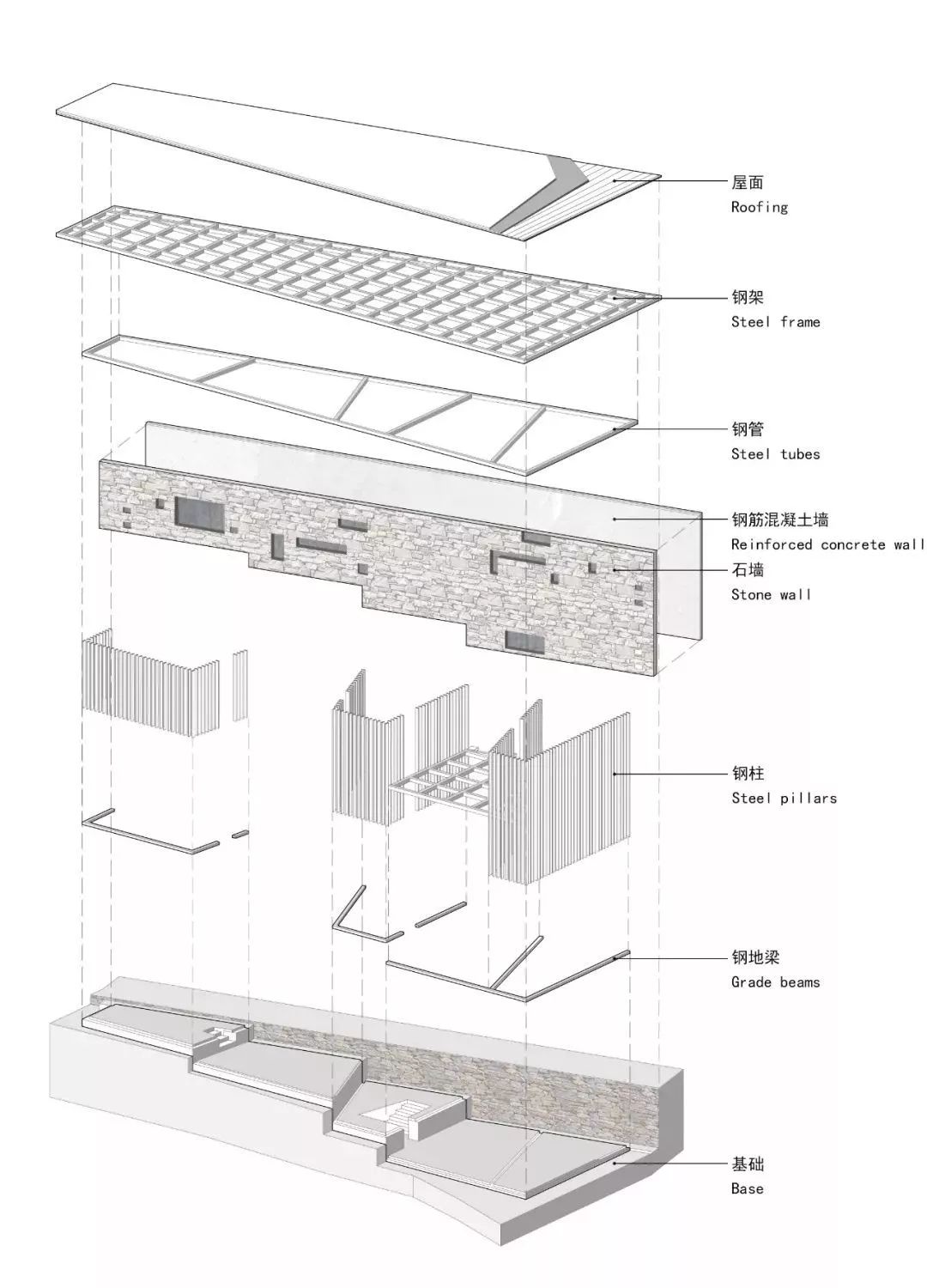
由于矩形钢管格栅之间留有较大缝隙,光可以从中投射进来,所以该结构形式与传统的“筒体”不一样,更像是一个“光筛”,客人在钢结构的“光筛”里行进的时候,增加了与自然互动的体验。特别是傍晚时分,西晒阳光透过钢格栅缝隙将石砌墙面照亮的时候,建筑师将光影作为建筑材料的一种特殊形式运用于建筑空间中——“小钢屋”的本质是一次以体验自然为出发点的建造实验。
Due to the large gaps left between the steel tubes, light can make its way in. Therefore, this structure is different from the conventional "grid" in a sense, but more like a "light filter". When guests move inside the steel-structure "light filter", they can feel the interaction with nature. Especially at dusk, they can see the sunlight from the west penetrating through the gaps of the steel grid and illuminating the stone wall. Light and shadows were utilized as unique "construction materials" and incorporated into the architectural space. The steel hut is essentially a construction experiment focusing on the experience of nature.

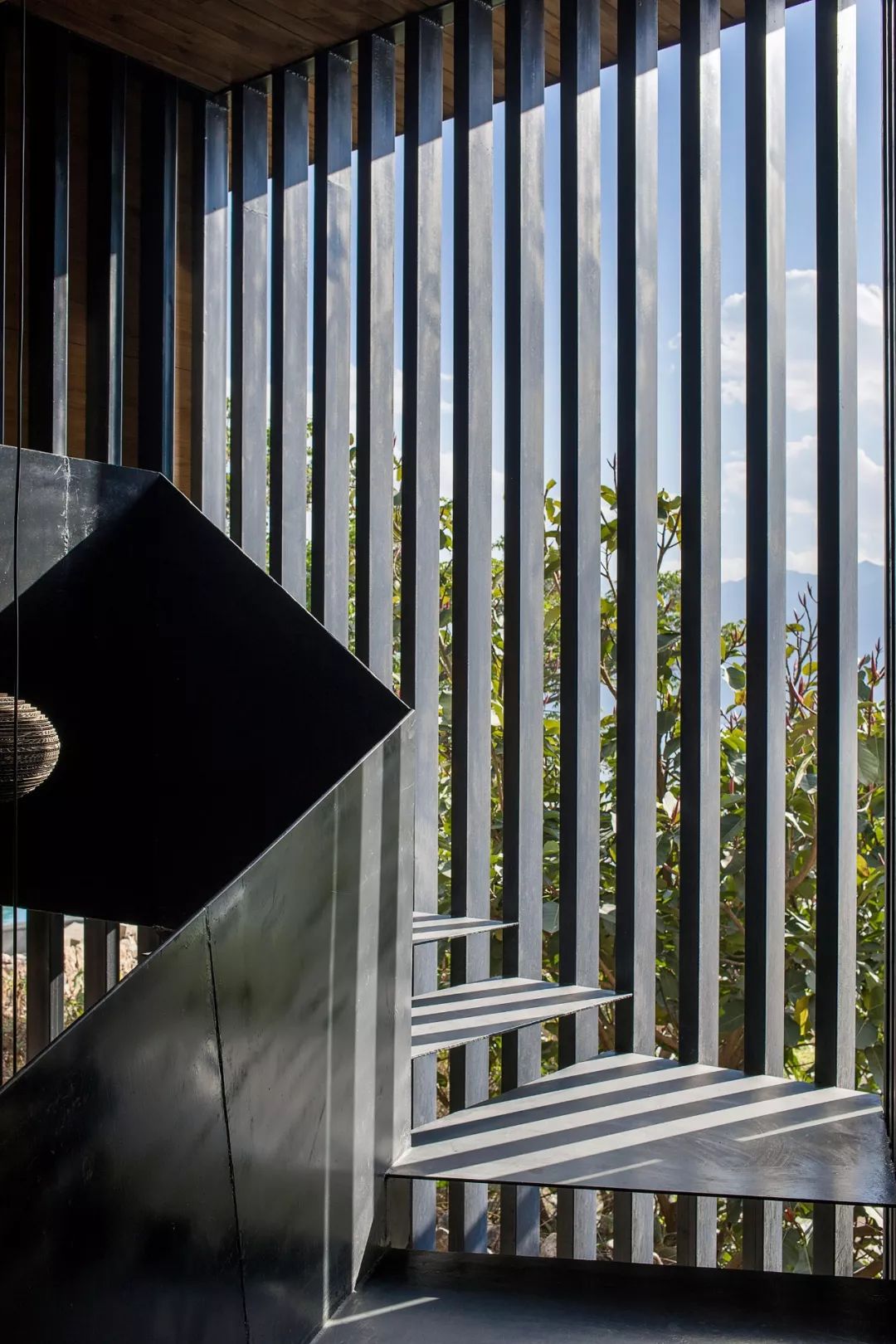
为应对场地东面的堡坎和高于场地的村路,建筑师先是浇筑了一道钢筋混凝土墙,然后在朝向室内一面用海东石砌筑墙面,形成了具有度假氛围的背景墙,所有的开关插座、壁炉、空调位及物品柜等均以壁龛的形式嵌入石头墙内,保证了石砌墙面的完整性。
On the east side of the steel hut, there is a retaining wall and a village path higher than the site. Based on this, we built a reinforced concrete wall for the hut, and then clad the interior-facing side of the wall in local stones, therefore creating a unique backdrop wall with a holiday atmosphere. All the switches, sockets, fireplaces, AC units and cabinets were placed in niches embedded in the stone wall, and by doing so ensured its integrity.
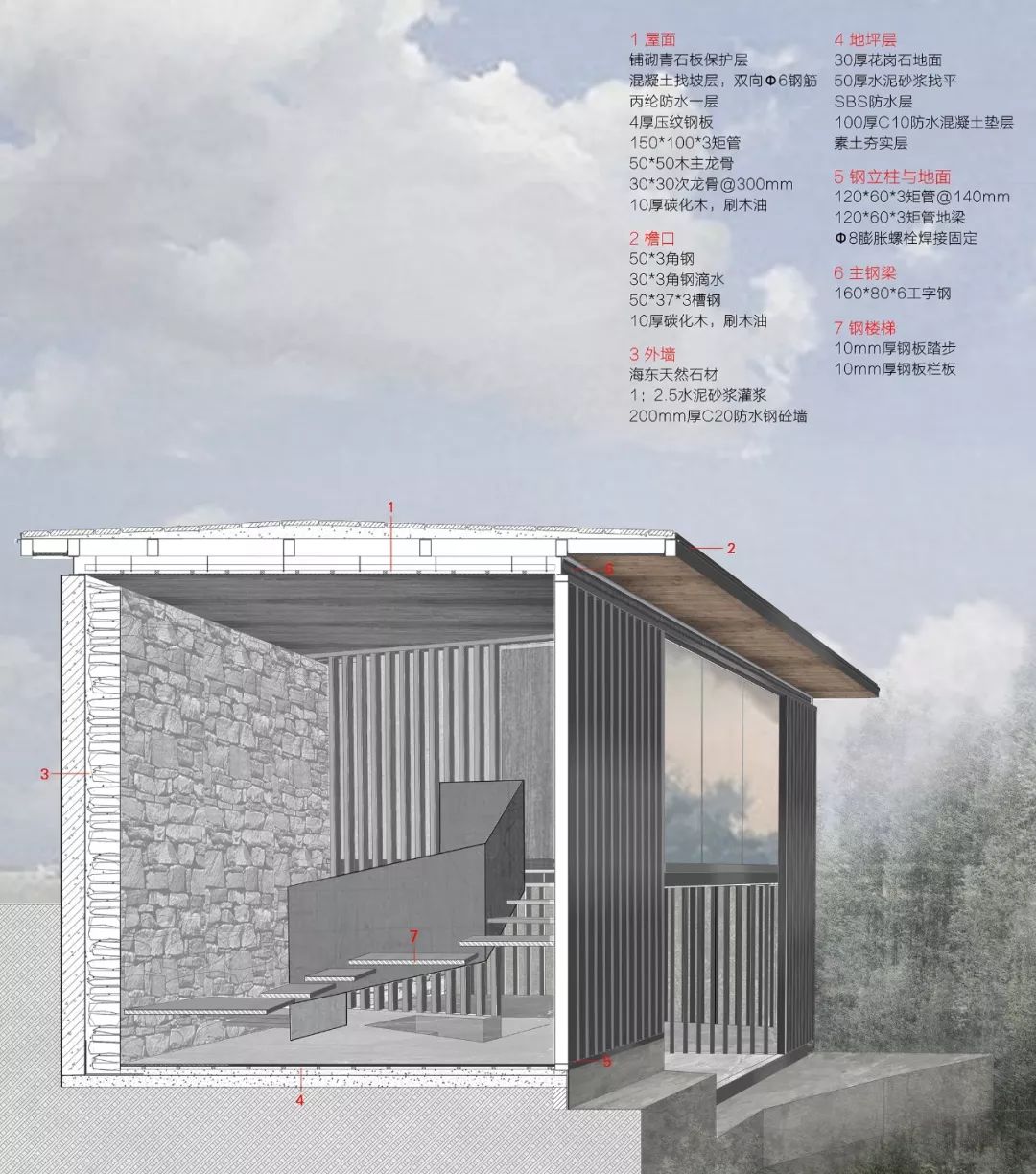
粗糙的石头墙、温暖的木质界面以及精致的钢,几种不同质感的材料在阳光下形成了特别的空间氛围。“小钢屋”的设计反应了结构与空间之间理性的关系,在材料和建造方面,建筑师表达了清晰的建造逻辑和朴素的在地建造观念。
The roughness of the stone wall, the warmth of the wooden interface, and the exquisiteness of steel, present the variety of material textures, and generate a unique spatial ambience. The design of the steel hut reflects the rational relationship between structure and space, and its material selection and construction show a clear logic and respect to locality.


设计图纸 ▽
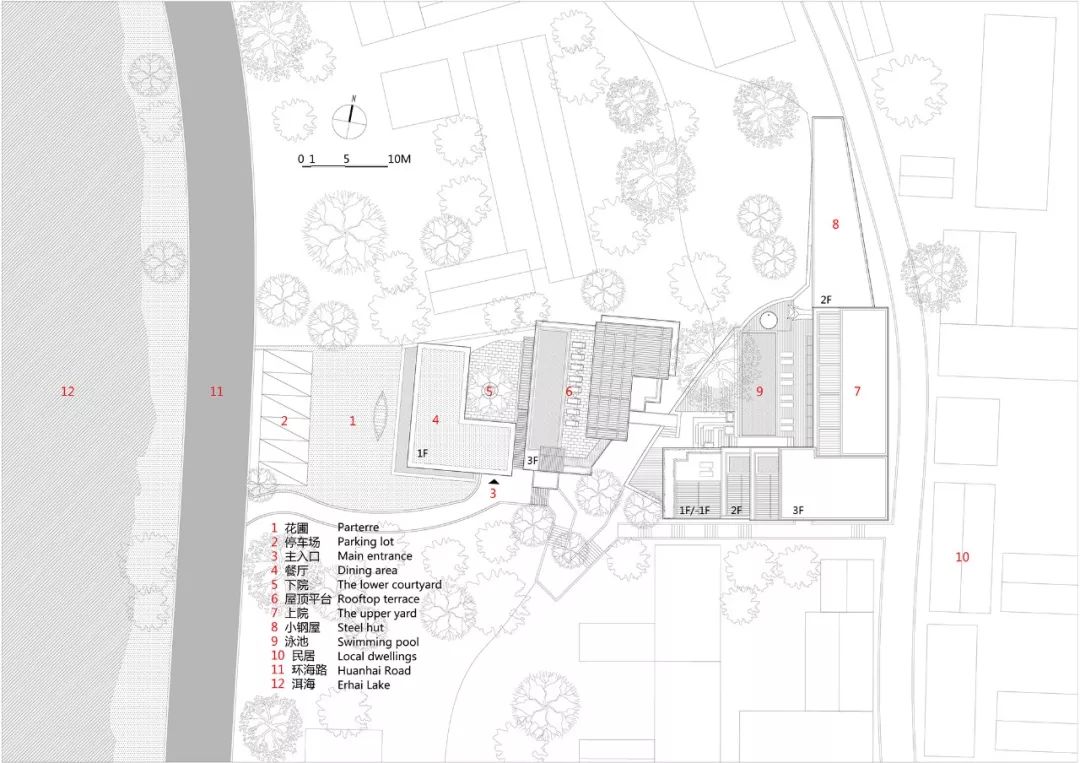
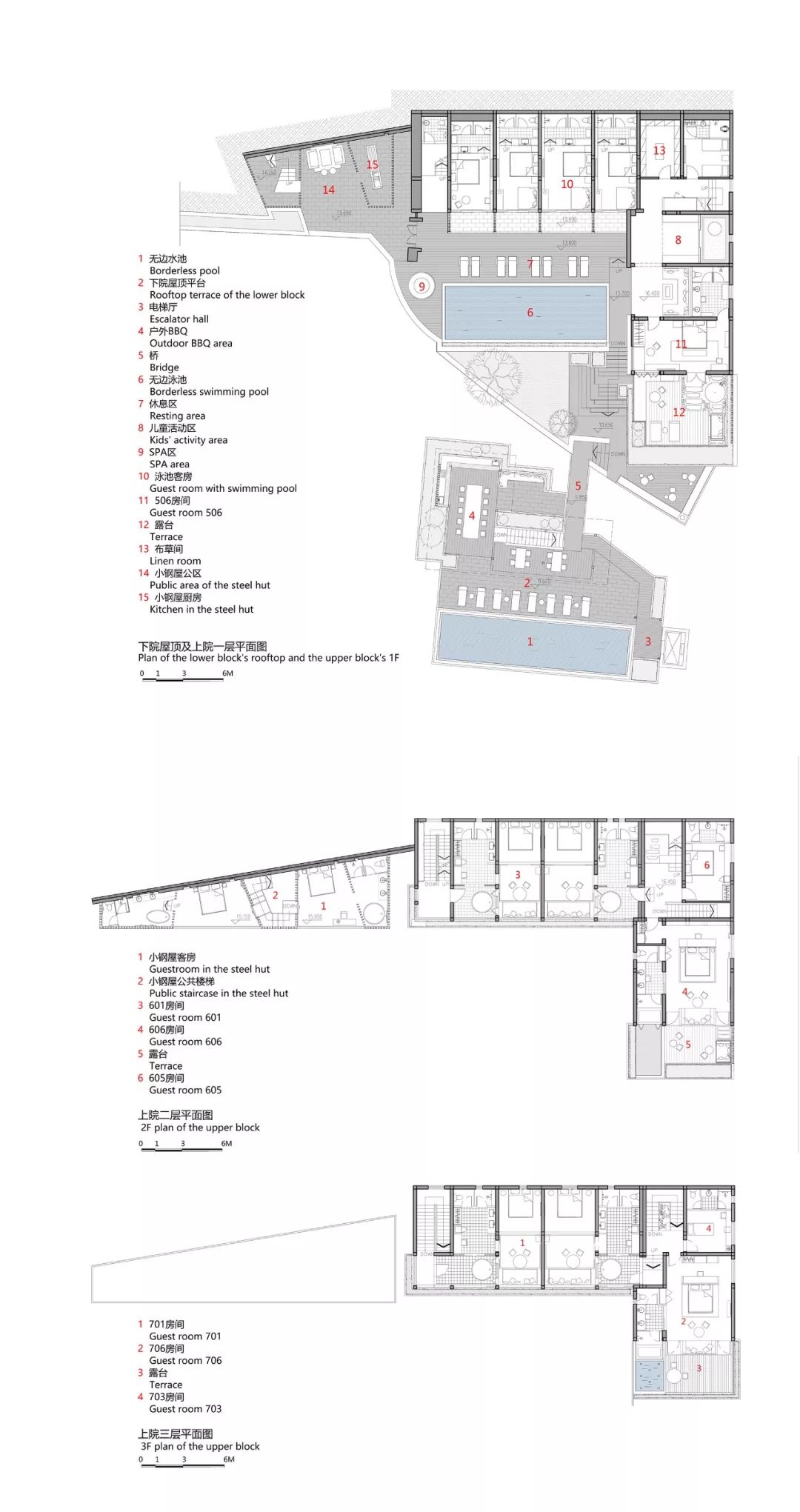

完整项目信息
项目名称:大理慢屋·极目度假酒店
业主单位:重庆慢屋酒店管理有限公司
项目地址:大理市海东镇文笔村
建筑面积:改造前1110平方米,改造后1785平方米
设计时间:2015年3月—2016年6月
完成时间:2017年4月
设计单位:IDO元象建筑、重庆合信建筑设计院有限公司
室内设计:CAS千迈设计
摄影:存在建筑-建筑摄影、梁小龙、IDO元象建筑
版权声明:本文由IDO元象建筑、重庆合信建筑设计院有限公司授权有方发布,欢迎转发,禁止以有方编辑版本转载。
投稿邮箱:media@archiposition.com
上一篇:钱塘江畔,游园“山舍”:浙江普利斐特生产基地一期组团 / gad · line+ studio
下一篇:日常生活礼赞:雨儿胡同16、18、20号院综合整治改造提升 / URBANUS都市实践